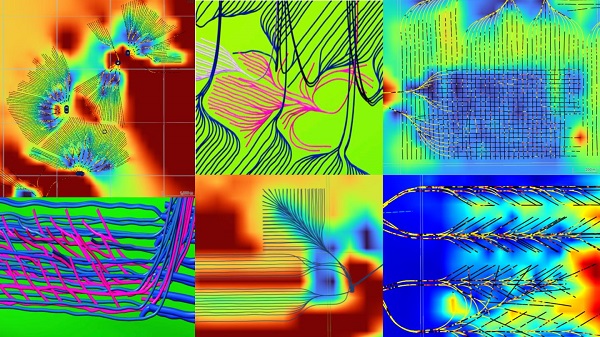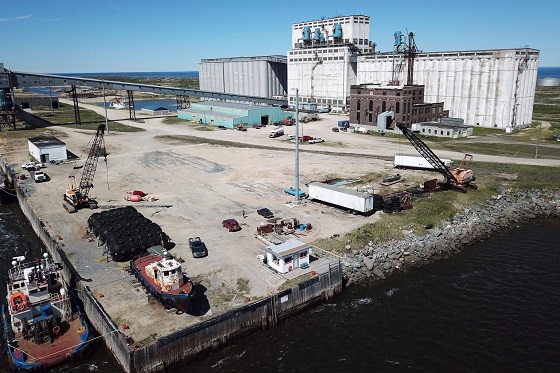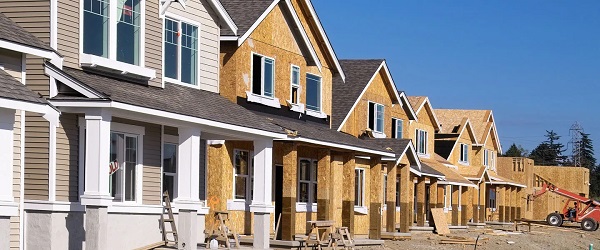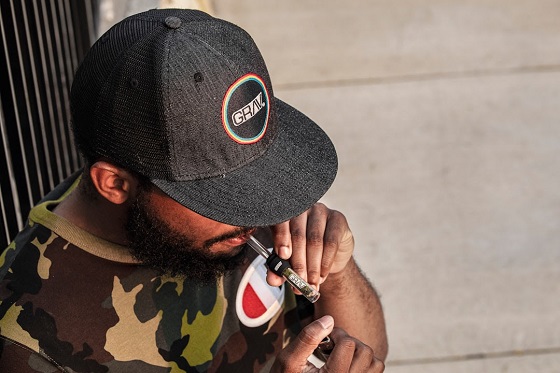Alberta
Taking Action Against Climate Change with Emissions Reduction Alberta

As the climate conversation continues to expand in the public space, ambitious goals for reducing emissions are being communicated at regional and international levels. The burning of fossil fuels has substantially contributed to the build up of greenhouse gases (GHG) in our atmosphere, resulting in the climate changes currently impacting major industries, ecosystems, weather patterns, natural resources and biodiversity around the world. According to Climate Change in Alberta, “97% of climate scientists now agree that human activity is responsible for most temperature increases over the past 250 years.”
In Alberta, over 50% of GHG emissions are the result of “industrial, manufacturing and construction activity, as well as producing the electricity we consume … the remainder comes from heating our homes and businesses, transportation and from agriculture, forestry and municipal waste” (1). As a part of a multi-level provincial strategy aimed at reducing greenhouse gas emissions in Alberta, the government currently partners with various organizations and funds a number of programs designed to accelerate emissions reduction initiatives and technology development.
One Alberta organization that has played a significant role in furthering emissions reduction in our province for more than a decade is Emissions Reduction Alberta (ERA), based in Edmonton.
Established in 2009, Emissions Reduction Alberta “takes action on climate change and supports economic growth by investing in the pilot, demonstration and deployment of clean technology solutions that reduce GHGs, lower costs and attract investment, and create jobs in Alberta.” For more than 10 years, ERA has been facilitating Alberta’s transition to a low carbon economy by supporting and furthering the most innovative approaches to emissions reduction.
“Alberta’s industries have ambitious goals around emissions reductions that can’t be achieved without deploying new technology,” says Steve MacDonald, CEO of Emissions Reduction Alberta, “Our goal is to identify and accelerate the innovation Alberta needs to grow the economy and cut emissions.”

Steve MacDonald – CEO of Emissions Reduction Alberta
ERA’s funding comes from the carbon price paid by large final emitters in Alberta. With this funding, ERA operates a challenge structure that calls innovative companies to respond to pertinent industry challenges with original solutions. “Challenges are always well over-subscribed,” says MacDonald. “This gives us the ability to really select the best of the best and get a good understanding of the range of ideas that are out there.”
To date, ERA has invested $607 million in the development of 183 unique projects dedicated to reducing emissions across various industries. ERA funding is leveraged and for every dollar invested by the organization, another $6.40 is invested by industry, innovators and other project funders. As a result, the total value of these projects is over $4 billion. ERA estimates this will lead to a total reduction of 34,800,000 tonnes of CO2e by the year 2030.
In October 2019, ERA announced their Natural Gas Challenge, a campaign committed to improving cost competitiveness and reducing emissions in Alberta’s natural gas sector. On July 21, 2020, ERA pledged $58.4 million to the 20 winning projects, valued at over $155 million. According to ERA, these projects will create 760 new jobs and, “if successful, these technology innovations will lead to cumulative GHG reductions of almost one million tonnes of CO2e by 2030 – equivalent to the GHG emissions from 750,000 passenger vehicles driven for one year.”
Moving forward, the ERA expects to see the first round of Expression of Interest for their latest $40 million Food, Farming and Forestry Challenge by August 27, 2020. In the meantime, the organization will continue to focus on aiding Alberta’s economic recovery through diversification and job creation, and the pursuit of innovation.
“We are supporting the actions required to help Alberta achieve its economic and environmental goals,” says MacDonald. “Our investments are making a real difference; one that is fundamental to Alberta’s future success. From incremental change to game-changers, we are developing the solutions Alberta and the world need.”
To learn more about Emissions Reduction Alberta, visit https://eralberta.ca.
For more stories, visit Todayville Calgary.
Alberta
Alberta bill would protect freedom of expression for doctors, nurses, other professionals

From LifeSiteNews
‘Peterson’s law,’ named for Canadian psychologist Jordan Peterson, was introduced by Alberta Premier Danielle Smith.
Alberta’s Conservative government introduced a new law that will set “clear expectations” for professional regulatory bodies to respect freedom of speech on social media and online for doctors, nurses, engineers, and other professionals.
The new law, named “Peterson’s law” after Canadian psychologist Jordan Peterson, who was canceled by his regulatory body, was introduced Thursday by Alberta Premier Danielle Smith.
“Professionals should never fear losing their license or career because of a social media post, an interview, or a personal opinion expressed on their own time,” Smith said in a press release sent to media and LifeSiteNews.
“Alberta’s government is restoring fairness and neutrality so regulators focus on competence and ethics, not policing beliefs. Every Albertan has the right to speak freely without ideological enforcement or intimidation, and this legislation makes that protection real.”
The law, known as Bill 13, the Regulated Professions Neutrality Act, will “set clear expectations for professional regulatory bodies to ensure professionals’ right to free expression is protected.”
According to the government, the new law will “Limit professional regulatory bodies from disciplining professionals for expressive off-duty conduct, except in specific circumstances such as threats of physical violence or a criminal conviction.”
It will also restrict mandatory training “unrelated to competence or ethics, such as diversity, equity, and inclusion training.”
Bill 13, once it becomes law, which is all but guaranteed as Smith’s United Conservative Party (UCP) holds a majority, will also “create principles of neutrality that prohibit professional regulatory bodies from assigning value, blame or different treatment to individuals based on personally held views or political beliefs.”
As reported by LifeSiteNews, Peterson has been embattled with the College of Psychologists of Ontario (CPO) after it mandated he undergo social media “training” to keep his license following posts he made on X, formerly Twitter, criticizing Trudeau and LGBT activists.
He recently noted how the CPO offered him a deal to “be bought,” in which the legal fees owed to them after losing his court challenge could be waived but only if he agreed to quit his job as a psychologist.
Early this year, LifeSiteNews reported that the CPO had selected Peterson’s “re-education coach” for having publicly opposed the LGBT agenda.
The Alberta government directly referenced Peterson’s (who is from Alberta originally) plight with the CPO, noting “the disciplinary proceedings against Dr. Jordan Peterson by the College of Psychologists of Ontario, demonstrate how regulatory bodies can extend their reach into personal expression rather than professional competence.”
“Similar cases involving nurses, engineers and other professionals revealed a growing pattern: individuals facing investigations, penalties or compulsory ideological training for off-duty expressive conduct. These incidents became a catalyst, confirming the need for clear legislative boundaries that protect free expression while preserving professional standards.”
Alberta Minister of Justice and Attorney General Mickey Amery said regarding Bill 13 that the new law makes that protection of professionals “real and holds professional regulatory bodies to a clear standard.”
Last year, Peterson formally announced his departure from Canada in favor of moving to the United States, saying his birth nation has become a “totalitarian hell hole.”
Alberta
‘Weird and wonderful’ wells are boosting oil production in Alberta and Saskatchewan

From the Canadian Energy Centre
Multilateral designs lift more energy with a smaller environmental footprint
A “weird and wonderful” drilling innovation in Alberta is helping producers tap more oil and gas at lower cost and with less environmental impact.
With names like fishbone, fan, comb-over and stingray, “multilateral” wells turn a single wellbore from the surface into multiple horizontal legs underground.
“They do look spectacular, and they are making quite a bit of money for small companies, so there’s a lot of interest from investors,” said Calin Dragoie, vice-president of geoscience with Calgary-based Chinook Consulting Services.
Dragoie, who has extensively studied the use of multilateral wells, said the technology takes horizontal drilling — which itself revolutionized oil and gas production — to the next level.
“It’s something that was not invented in Canada, but was perfected here. And it’s something that I think in the next few years will be exported as a technology to other parts of the world,” he said.
Dragoie’s research found that in 2015 less than 10 per cent of metres drilled in Western Canada came from multilateral wells. By last year, that share had climbed to nearly 60 per cent.
Royalty incentives in Alberta have accelerated the trend, and Saskatchewan has introduced similar policy.
Multilaterals first emerged alongside horizontal drilling in the late 1990s and early 2000s, Dragoie said. But today’s multilaterals are longer, more complex and more productive.
The main play is in Alberta’s Marten Hills region, where producers are using multilaterals to produce shallow heavy oil.
Today’s average multilateral has about 7.5 horizontal legs from a single surface location, up from four or six just a few years ago, Dragoie said.
One record-setting well in Alberta drilled by Tamarack Valley Energy in 2023 features 11 legs stretching two miles each, for a total subsurface reach of 33 kilometres — the longest well in Canada.
By accessing large volumes of oil and gas from a single surface pad, multilaterals reduce land impact by a factor of five to ten compared to conventional wells, he said.
The designs save money by skipping casing strings and cement in each leg, and production is amplified as a result of increased reservoir contact.
Here are examples of multilateral well design. Images courtesy Chinook Consulting Services.
Parallel
Fishbone
Fan
Waffle
Stingray
Frankenwells
-

 Energy2 days ago
Energy2 days agoExpanding Canadian energy production could help lower global emissions
-

 Business2 days ago
Business2 days agoWill the Port of Churchill ever cease to be a dream?
-

 COVID-191 day ago
COVID-191 day agoFreedom Convoy protestor Evan Blackman convicted at retrial even after original trial judge deemed him a “peacemaker”
-

 Daily Caller1 day ago
Daily Caller1 day agoTrump Gives Zelenskyy Until Thanksgiving To Agree On Peace Deal, With U.S. Weapons And Intel On The Line
-

 Daily Caller1 day ago
Daily Caller1 day agoBari Weiss Reportedly Planning To Blow Up Legacy Media Giant
-

 Business20 hours ago
Business20 hours agoI Was Hired To Root Out Bias At NIH. The Nation’s Health Research Agency Is Still Sick
-

 Business2 days ago
Business2 days agoThe numbers Canada uses to set policy don’t add up
-

 Business2 days ago
Business2 days agoNew airline compensation rules could threaten regional travel and push up ticket prices











